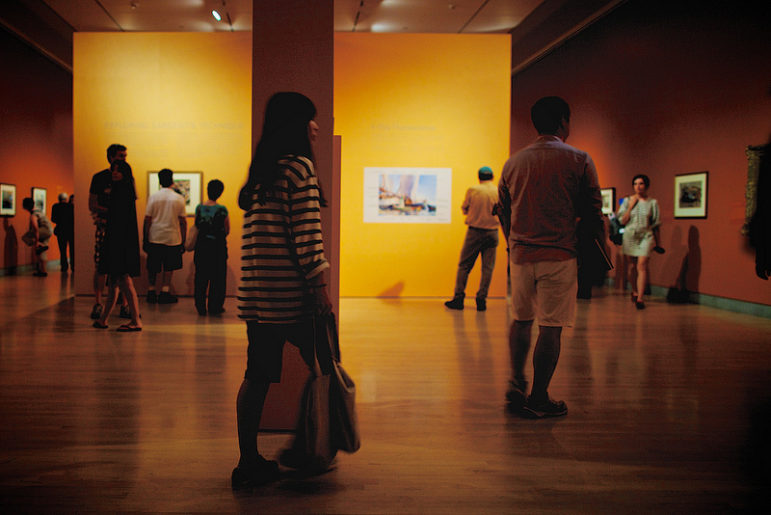
July 8, 2016; Hyperallergic
In 2015, the Brooklyn Museum introduced its Ask App, which allows visitors to pose questions for the museum’s historians and instantly receive answers using a platform similar to Apple’s iMessage. Visitors take pictures of the pieces they’re looking at, send them through the app to museum staff with their questions, and shortly thereafter receive a message with the answer. After experiencing success with the iOS version, about two months ago, the museum launched the Android version of Ask. A press release by the museum calls Ask “a new standard in museum visitor engagement by leveraging technology.”
This juxtaposition of technology and art is not a new one. To offset falling trends in visitors, museums have been leveraging mobile technology for the better part of this decade. For instance, one of the highest rated apps is the Met app, which contains the standard information but also offers advice on must-see exhibits, suggestions for families, and curated Staff Picks with clever names such as “art to make you smile, think, and LOL.” The Museum of Modern Art’s app directs visitors through the museum with maps and audio descriptions of the pieces as well as a full audio tour.
Highlighted in Mashable, the Smithsonian apps were lauded as leaders in the museum technology field. The collection of apps provides visitors with audio tours in multiple languages, mobile tours led by curators and more. The head of mobile strategy at the museum indicates that the Smithsonian’s next move will be into the space of augmented reality or virtual reality.
Sign up for our free newsletters
Subscribe to NPQ's newsletters to have our top stories delivered directly to your inbox.
By signing up, you agree to our privacy policy and terms of use, and to receive messages from NPQ and our partners.
Thus, while the Brooklyn Museum’s Ask app is not revolutionary in itself, it does offer one feature that seems unique: the ability to interact with museum staff to ask questions anonymously. In designing the app, Sara Devine, manager of audience engagement and interpretive materials, posed the question, “What are our visitors really looking for from us?” In seeking answers to this question, the museum spent six months strategically gathering information. In the end, they found that what visitors wanted most was to speak with people on staff and get recommendations. Audio tours are very helpful when navigating through museums, but without anyone to answer questions quickly, curiosity and interest quickly fade. Or, visitors spend time looking up answers to their questions on their cell phones, rather than experiencing the art.
According to Devine, visitors report that they look more closely at the art in the gallery as opposed to on their cell phones. Thanks to the anonymity feature, museum historians indicate that visitors don’t apologize for asking seemingly trivial questions. Both results point to visitors attaining a deeper understanding of and appreciation for the pieces in the gallery, which achieves the overarching goal of the Brooklyn Museum engagement staff.
The only pitfall of this app is that it requires human labor to sustain it. Typically the benefit of technology is automation—there is upfront work in developing the product, but once it’s created the effort spent decreases over time. This idea is reflected in the apps created by other museums, which essentially only need staff to develop fresh content to upload. Currently, the Brooklyn Museum has five full-time and two part-time historians who can answer questions, and their schedule varies with museum traffic. Moving forward, as more visitors download the app and ask questions, the museum may need to determine how to sustain the number of historians on staff to continue to ensure rapid responses to visitor inquiries.—Sheela Nimishakavi











